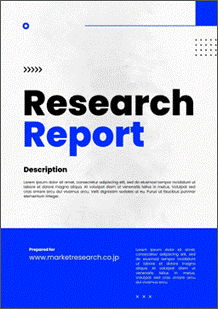 | • レポートコード:MRC2203A433 • 出版社/出版日:Mordor Intelligence / 2022年1月 • レポート形態:英文、PDF、70ページ • 納品方法:Eメール(受注後2-3営業日) • 産業分類:航空宇宙 |
| Single User | ¥703,000 (USD4,750) | ▷ お問い合わせ |
| Site Licence | ¥962,000 (USD6,500) | ▷ お問い合わせ |
| Corporate License | ¥1,295,000 (USD8,750) | ▷ お問い合わせ |
• お支払方法:銀行振込(納品後、ご請求書送付)
レポート概要
| Mordor Intelligence社は、世界の電気推進衛星市場について調査・分析し、イントロダクション、調査手法、エグゼクティブサマリー、市場動向、種類別(ハイブリッド、全電気)分析、用途別(商業用、軍事用)分析、地域別(北米、ヨーロッパ、アジア太平洋、その他地域)分析、競争状況、市場機会・将来の傾向などの項目を掲載しています。 ・イントロダクション ・調査手法 ・エグゼクティブサマリー ・市場動向 ・世界の電気推進衛星市場規模:種類別(ハイブリッド、全電気) ・世界の電気推進衛星市場規模:用途別(商業用、軍事用) ・世界の電気推進衛星市場規模:地域別(北米、ヨーロッパ、アジア太平洋、その他地域) ・競争状況(Sitael S.p.A.、Accion Systems Inc.、Busek Co. Inc.、...) ・市場機会・将来の傾向 |
The electric propulsion satellites market is anticipated to grow at a CAGR of more than 6% during the forecast period.
Key Highlights
- Space-based activities have flourished during the last decade, as evident from the number of satellites launched for both commercial and defense applications, ranging from telecommunication, earth-observation, to experimental scientific research. The absence of a combustion supporting atmosphere in space has resulted in the increased adoption of electric propulsion technologies for maneuvering satellites in orbit.
- The inherent benefits of integrating an electric-propulsion system to different platforms are also driving the rate of adoption. Besides, the emergence of global green emission initiatives has encouraged the adoption of eco-friendly propulsion technologies, such as electric propulsion.
Key Market Trends
Full-Electric Segment to Experience the Highest Growth During the Forecast Period
The adoption and diffusion of new technologies, such as satellites, can help disseminate information over broad areas, enable instantaneous telecommunications, generate, and transmit high-resolution images of certain points of interest located all around the world simultaneously. The advent of miniaturized electronics and the increasing use of smart manufacturing materials have resulted in the development of small satellites with shorter development cycles and lower deployment costs. The physical limitations of such satellites encourage the development and integration of powerful yet compatible electric propulsion systems to effectively perform orbital correction maneuvers.
Several contracts are being awarded for the ongoing space missions and strategic collaborations are underway to capitalize on joint capabilities to address an evolving market opportunity. For instance, in October 2019, Accion was awarded a USD 3.9 million as part of the Moon to Mars technology program. As per the contract, Accion will work with NASA’s Jet Propulsion Laboratory (JPL) to replace the cold gas propulsion system that was used on the MarCO CubeSats with a more efficient ion electrospray propulsion system. The program is scheduled to initiate in March 2020, and a potential space launch is expected in the first half of 2021. Such developments are anticipated to drive the business prospects of the players in the market in focus during the forecast period.
Asia-Pacific is Expected to Generate the Highest Demand During the Forecast Period
The Asia-Pacific region is expected to generate the highest demand for electric propulsion systems during the forecast period. This increasing demand is mainly due to the increasing deployment of satellites driven by evolving regional dynamics. Several satellite launches are scheduled during the forecast period.
Quantification of chemical emissions into the air is a key step in explaining observed variability and trends in atmospheric composition and in attributing these observed changes to their causes on local to global scales. Since, satellite launch vehicles produce different emissions, including water vapor and carbon dioxide from liquid and solid fuels, as well as hydrochloric acid from only solid fuels. Initiatives such as the Mission 2020 encourage the adoption of green propulsion technologies, such as electric propulsion, to restrict the ongoing global climate conversion by minimizing the greenhouse gas emissions by 2020.
Competitive Landscape
The prominent players in the electric propulsion satellites market are Sitael S.p.A., Busek Co. Inc., Northrop Grumman Corporation, Thales Alenia Space, and Safran SA. These companies are majorly into the design, manufacturing, and integration of complete electric propulsion systems for space platforms. The market is highly competitive with the major players striving to produce custom requirement-based product designs. High capital expenditure on account of conducting extensive R&D to develop advanced electric propulsion systems and enhance their current capabilities poses a threat to new market entrants. Additionally, the use of 3D printing technology in propulsion drives is anticipated to simultaneously generate demand for new system components and designs to cater to the demand for sophisticated electric propulsion systems with reduced size and mass without compromising on relative performance. In December 2019, an Austrian space tech agency concluded its ongoing research to develop a modular propulsion system for small satellites ranging from 1 to 500 kg. The Field Emission Electric Propulsion (FEEP) is an advanced electrostatic space propulsion system that consists of an emitter and an accelerator electrode and uses liquid metal as a propellant. The upgraded IFM Micro Thruster has an input power of 100 watts, producing up to 1.5 mN of thrust and providing 50 kN of total impulse, thereby making it particularly well-adapted to small and medium-sized spacecraft.
Additional Benefits:
- The market estimate (ME) sheet in Excel format
- 3 months of analyst support
1 INTRODUCTION
1.1 Study Assumptions
1.2 Scope of the Study
2 RESEARCH METHODOLOGY
3 EXECUTIVE SUMMARY
4 MARKET DYNAMICS
4.1 Market Overview
4.2 Market Drivers
4.3 Market Restraints
4.4 Porters Five Forces Analysis
4.4.1 Threat of New Entrants
4.4.2 Bargaining Power of Buyers/Consumers
4.4.3 Bargaining Power of Suppliers
4.4.4 Threat of Substitute Products
4.4.5 Intensity of Competitive Rivalry
5 MARKET SEGMENTATION
5.1 Type
5.1.1 Hybrid
5.1.2 Full-Electric
5.2 Application
5.2.1 Commercial
5.2.2 Military
5.3 Geography
5.3.1 North America
5.3.1.1 US
5.3.1.2 Canada
5.3.2 Europe
5.3.2.1 Germany
5.3.2.2 UK
5.3.2.3 France
5.3.2.4 Russia
5.3.2.5 Rest of Europe
5.3.3 Asia-Pacific
5.3.3.1 India
5.3.3.2 China
5.3.3.3 Japan
5.3.3.4 South Korea
5.3.3.5 Rest of Asia-Pacific
5.3.4 Rest of the World
6 COMPETITIVE LANDSCAPE
6.1 Vendor Market Share
6.2 Company Profiles
6.2.1 Sitael S.p.A.
6.2.2 Accion Systems Inc.
6.2.3 Busek Co. Inc.
6.2.4 Orbital ATK (Northrop Grumman Corporation)
6.2.5 Ad Astra Rocket Company
6.2.6 MSNW LLC
6.2.7 Aerojet Rocketdyne Holdings, Inc.
6.2.8 Safran SA
6.2.9 Airbus SE
6.2.10 The Boeing Company
6.2.11 Thales Alenia Space
7 MARKET OPPORTUNITIES AND FUTURE TRENDS